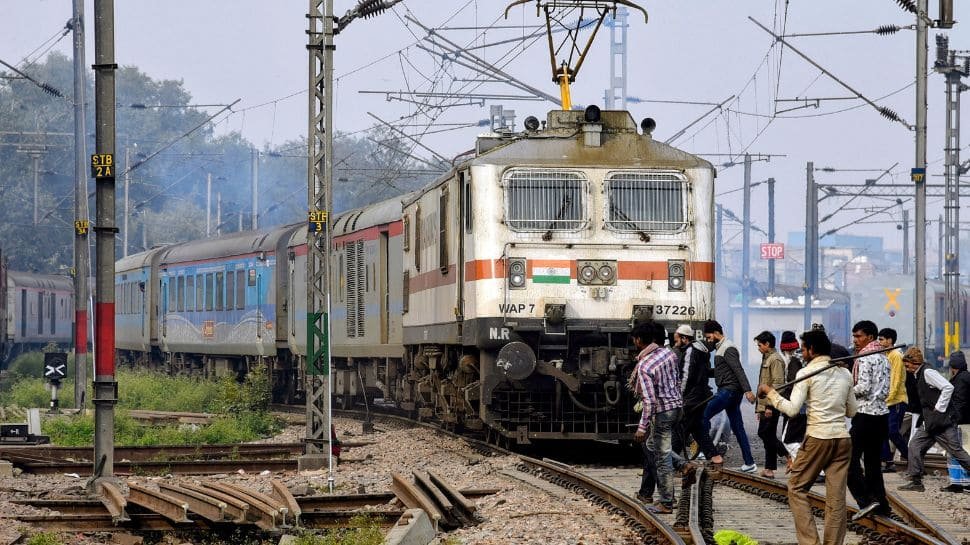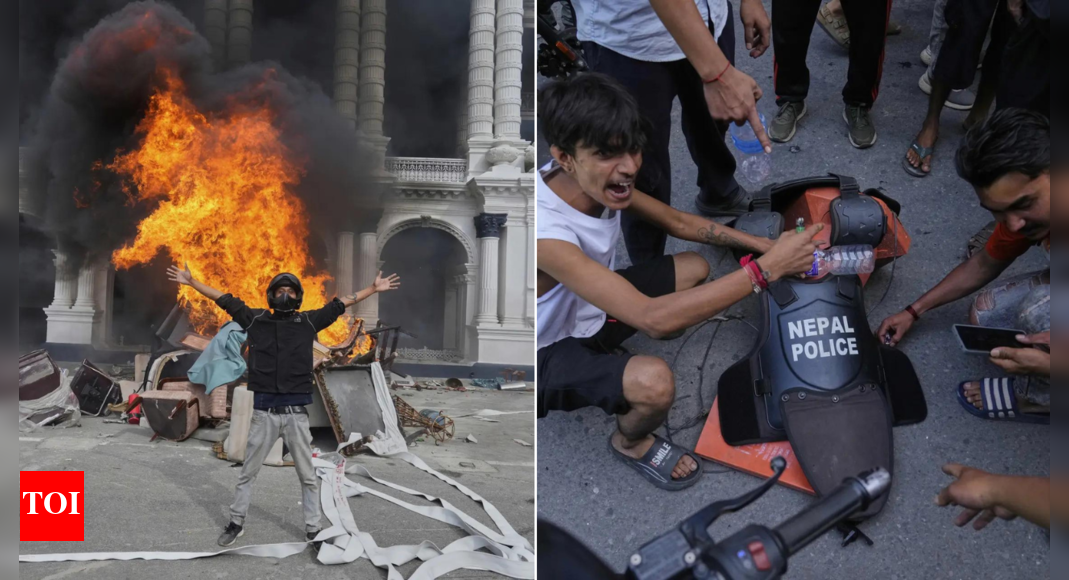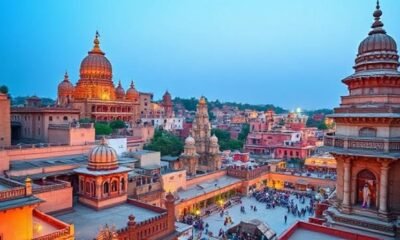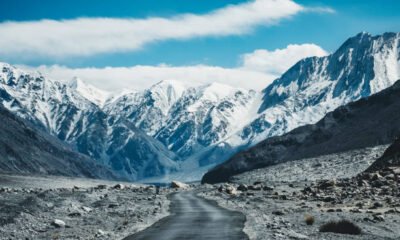Travel Guides & Articles
Global Sports Tourism Surge: UK, India, Brazil, and South Korea Lead Global Growth in Travel Driven by Major Events

Published on
August 18, 2025
As international tourism continues to develop around the world, sports tourism has emerged as one of the main drivers of global travel. Nations such as the UK, India, Brazil, and South Korea are at the forefront, with tourists now blending sporting events with free time activities to produce an even richer and more engaging holiday experience. This change in tourism patterns mirrors the increasing significance of sports tourism in the overall travel industry, which is expected to hit $1.8 trillion by the year 2030 per Allied Market Research.
Wimbledon and Formula 1: Big Events Drive Record Numbers of Visitors
In the UK, Wimbledon and Formula 1 races have become major events that attract global tourists. At Wimbledon 2025, held from June 30 to July 13, the 28% increase in UK visa-related searches underlines the rising trend of visitors extending their stays to explore the UK beyond the tennis courts. Similarly, Formula 1, with races spanning 24 events in 21 countries, has become a global draw, encouraging fans from Europe and Asia to explore multiple destinations while enjoying their favorite races. This trend has highlighted how major events are now part of the travel experience, offering cultural exploration in addition to the sports spectacle.
India’s Rising Influence in Sports Tourism
India is another country capitalizing on the sports tourism boom. In 2024, India saw a 60% rise in visa applications for the Paris Olympics, and sports-related travel increased by 50%. As India pushes forward with its National Sports Policy 2025, aiming to become one of the top five sporting nations by 2047, sports tourism is expected to play a major role in the country’s economic growth. India’s growing middle class and its rising interest in global sports events make it a vital player in the sports tourism sector, as the country hosts major events and increases its appeal as a destination for sporting experiences.
Brazil’s Growing Sports Tourism Market
Brazil also stands at the forefront of sports tourism, with increasing international tourism tied to sports such as football and Formula 1. With Brazil regularly hosting major international sporting events, such as World Cup qualifiers and Formula 1 races, the sports tourism industry has flourished. Brazilian tourism authorities are focusing on integrating sports events with local cultural experiences to draw in both sports fans and leisure travelers. As Brazil capitalizes on its sports tourism potential, the country is emerging as a must-visit destination for both competitive sports enthusiasts and tourists looking for an authentic cultural experience.
South Korea and Its Sports Tourism Growth
Meanwhile, South Korea is focusing on becoming a key sports tourism destination in Asia. With its recent success in hosting the Winter Olympics and increasingly popular Formula 1 races, South Korea is now building a reputation for hosting major sports events and attracting international visitors. The rise in sports tourism in South Korea is also complemented by cultural tourism, with tourists exploring K-pop, traditional food, and historic landmarks while attending high-profile sports competitions. The integration of cultural experiences with sports events is expected to position South Korea as a leader in sports tourism across Asia.
The Global Rise of Sports Tourism and Its Economic Impact
The global sports tourism market is expected to reach $1.8 trillion by 2030, growing at a 16% annual rate. This surge is driven by the increasing interest in international sporting events, a rise in disposable income, and global demand for experiential travel. According to Tourism Economics, global mobility is increasingly shaped by sports, and tourism boards worldwide are embracing this trend by integrating sports into their tourism strategies. Countries like the UK, India, Brazil, and South Korea are all enhancing their tourism appeal by promoting sports events, creating memorable travel experiences that extend beyond the matches or races themselves.
Future Prospects: Expanding Global Sports Tourism
With sports tourism growing exponentially, the global tourism industry is undergoing a transformation. Tourism authorities are increasingly looking to sports events to drive travel and economic growth. By integrating sports into their tourism strategies, countries like the UK, India, Brazil, and South Korea are poised to further boost visitor numbers and economic activity. With investments in sports infrastructure, global collaboration, and inclusive travel experiences, sports tourism is on track to become an integral part of the global tourism landscape, creating new opportunities for both travelers and destination economies.
The Power of Sports in Shaping Travel Trends
With sports tourism increasingly forming part of the international travel industry, nations around the world are capturing the opportunity to incorporate sports events into their tourism packages. Aesthetic global events like Wimbledon, Formula 1, and Olympic Games are now central parts of travel agendas, enabling destinations to provide not just sporting action, but also cultural, leisure, and adventure experiences. The sports tourism market is set to expand for the long term, with global leaders such as the UK, India, Brazil, and South Korea.
Travel Guides & Articles
India exploring ways to host sanctioned Taliban leader despite UN ban

India will continue to look at ways to work with the Taliban, including hosting its UN sanctioned leader Amir Khan Muttaqi in New Delhi, officials said.
Amir Khan Muttaqi, the Taliban’s acting foreign minister, was due to make his first trip to India in August but failed to secure a waiver on his existing travel ban by the United Nations Security Council.
He was sanctioned by the UNSC in 2001 over the acts and activities of the Taliban in Afghanistan during the hardline Islamist group’s previous rule in the 1990s.
On being asked about Muttaqi’s planned visit to India, Indian foreign ministry spokesperson Randhir Singh Jaiswal told reporters that India continues to engage with Afghan authorities.
“As you are aware, we have longstanding ties with the people of Afghanistan. India continues to support the aspirations and developmental needs of the Afghan people. We continue to have engagements with Afghan authorities,” he said last week.
According to officials in New Delhi, a waiver for Muttaqi was sought from the UNSC but it was not given clearance, in a move reportedly blocked by Pakistan.
The 1988 sanctions committee – a subsidiary body of the Security Council to oversee the implementation of sanctions – is currently led by Pakistan. It is overseeing the travel bans imposed on the Taliban leaders along with assets freeze and an arms embargo.
The Indian side will continue to look into ways to host the acting foreign minister and the visit is expected to proceed in the coming months after the waiver on the travel ban is addressed in the interest of regional cooperation, sources told The Independent.
If the waiver is granted, the visit from Muttaqi will bump India into a brief list of nations that have hosted the sanctioned Taliban leader – joining the ranks of China and Russia who have engaged with the fundamentalist group despite censure.
The India visit, seen as problematic over the Taliban’s policies banning almost half of its population of girls and women from schools, colleges, and workplaces on top of curtailing their basic human rights, will grant legitimacy to the group’s senior leader.
India has gradually ramped up its cautious yet increasingly diplomatic approach in engaging with the Taliban by meeting with the group’s senior officials in Qatar and also in Kabul.
In January this year India’s foreign secretary Vikram Misri met with Muttaqi and discussed diplomatic relations, security concerns, and humanitarian aid with Afghanistan at its highest-level talks till then in Dubai.
The two sides discussed expanding bilateral ties, with an increased focus on India’s security concerns, boost in trade through the Chabahar Port in Iran, and Indian investments in several development projects inside Afghanistan, which remain a key concern for Delhi.
In May this year, India’s external affairs minister S Jaishankar held a telephonic conversation with Muttaqi where the Afghan leader condemned the terrorist attack in Kashmir’s Pahalgam.
The exchange marked the highest level of contact between New Delhi and Kabul after the exit of Nato forces from Afghanistan in August 2021, even though India has not granted any official recognition to the Taliban.
The two spoke again last week in the aftermath of deadly 6.0 magnitude earthquake in Afghanistan, which killed at least 2,200 people even as authorities warned that the actual death toll could be higher as more bodies in remote areas were recovered.
Travel Guides & Articles
India’s Longest Train Journey Turns Dirtiest: 4,000 Km, 75 Hours Across 9 States And Stinky Travel – Viral video Exposed | News

A viral video by travel vlogger Ujjwal Singh exposed the filth inside the Dibrugarh–Kanyakumari Vivek Express. Covering 4,000 km in 74–75 hours across nine states, the train faces numerous cleanliness complaints, with passengers calling it India’s dirtiest.
Travel Guides & Articles
GenZ Protests Live: MEA urges Indians to defer travel to Nepal, issues advisory

Despite the government lifting the social media ban on Monday evening, protests continued unabated. The unrest, largely driven by college and school students, has been marked by clashes with police, who resorted to firing at multiple locations to disperse the crowds.
Police and local authorities also used water cannons, tear gas, and imposed curfews in parts of Kathmandu, including Kalanki and Baneshwor, as well as in Lalitpur’s Chapagaun-Thecho area. Demonstrators blocked roads by burning tyres and shouted slogans such as “KP Chor, Desh Chhod” and “Take action against corrupt leaders,” voicing frustration over corruption, dwindling economic opportunities, and the recent online blackout.
The Nepal government updated the casualty figures, reporting 18 deaths and 250 injuries during Monday’s protests. In response to the escalating situation, PM Oli called the demonstrations an “unpleasant situation” and blamed the unrest on “ambiguity between the thinking” of the younger generation.
Expressing condolences, he assured that a committee would probe the incident and submit a report within 15 days to recommend measures to prevent similar occurrences.
The protests have also triggered regional security measures. The India-Nepal border has been placed on alert, with the Sashastra Seema Bal (SSB) closely monitoring developments to prevent spillover of violence into Indian territory. Officials clarified that the alert is preventive and the situation remains under control.
The protests follow a government order that blocked 26 social media platforms, including Facebook, Instagram, X (formerly Twitter), YouTube, WhatsApp, LinkedIn, and Reddit, citing non-compliance with local registration requirements. The restrictions, combined with entrenched corruption and governance grievances, have fueled widespread anger among Nepal’s youth, prompting them to demand urgent reforms and accountability from the administration.
As the demonstrations continue, curfews remain in place in several districts, and authorities are bracing for further unrest while coordinating relief and law enforcement efforts to restore order.
-

 Business2 weeks ago
Business2 weeks agoThe Guardian view on Trump and the Fed: independence is no substitute for accountability | Editorial
-
Tools & Platforms4 weeks ago
Building Trust in Military AI Starts with Opening the Black Box – War on the Rocks
-

 Ethics & Policy1 month ago
Ethics & Policy1 month agoSDAIA Supports Saudi Arabia’s Leadership in Shaping Global AI Ethics, Policy, and Research – وكالة الأنباء السعودية
-

 Events & Conferences4 months ago
Events & Conferences4 months agoJourney to 1000 models: Scaling Instagram’s recommendation system
-

 Jobs & Careers2 months ago
Jobs & Careers2 months agoMumbai-based Perplexity Alternative Has 60k+ Users Without Funding
-

 Podcasts & Talks2 months ago
Podcasts & Talks2 months agoHappy 4th of July! 🎆 Made with Veo 3 in Gemini
-

 Education2 months ago
Education2 months agoMacron says UK and France have duty to tackle illegal migration ‘with humanity, solidarity and firmness’ – UK politics live | Politics
-

 Education2 months ago
Education2 months agoVEX Robotics launches AI-powered classroom robotics system
-

 Funding & Business2 months ago
Funding & Business2 months agoKayak and Expedia race to build AI travel agents that turn social posts into itineraries
-

 Podcasts & Talks2 months ago
Podcasts & Talks2 months agoOpenAI 🤝 @teamganassi





















